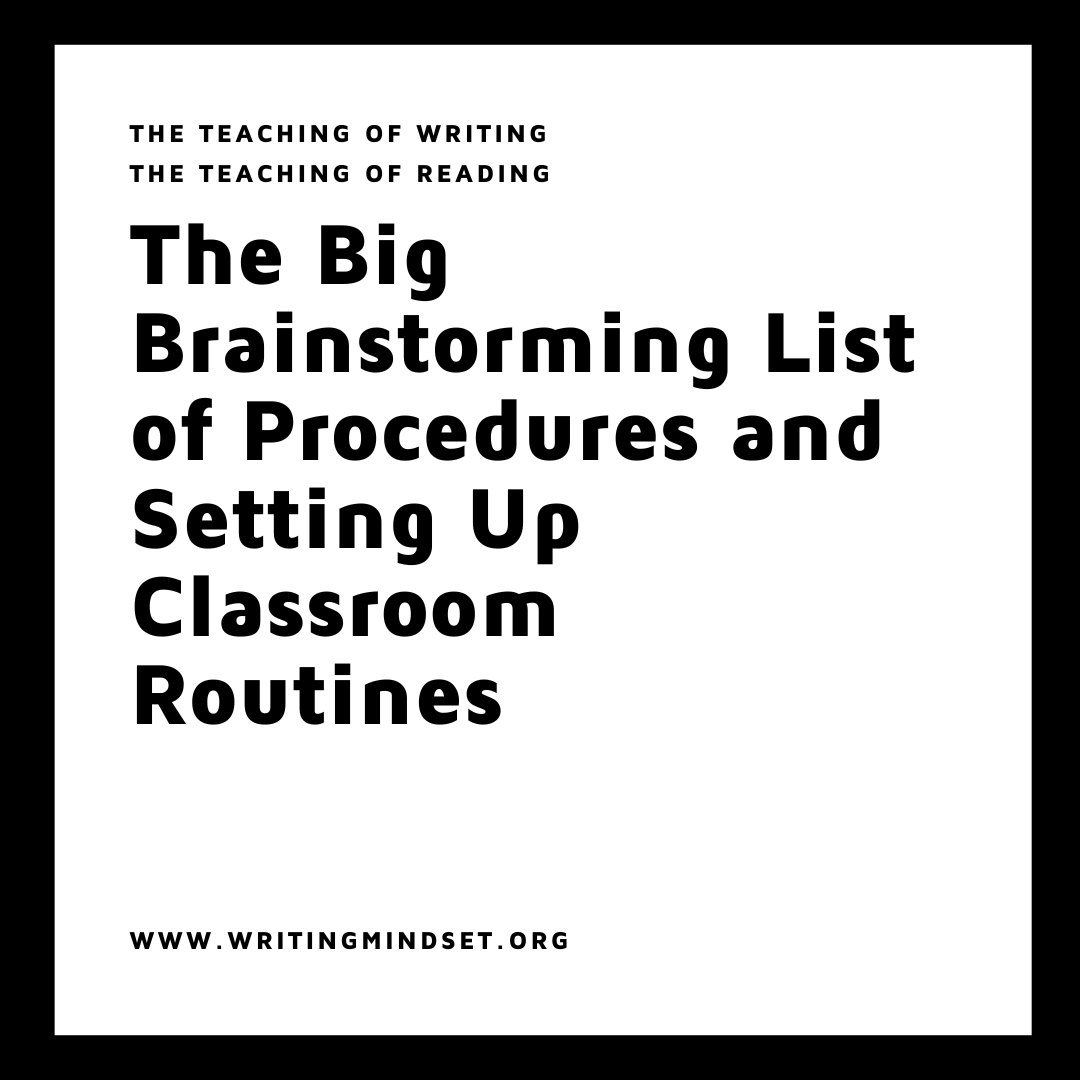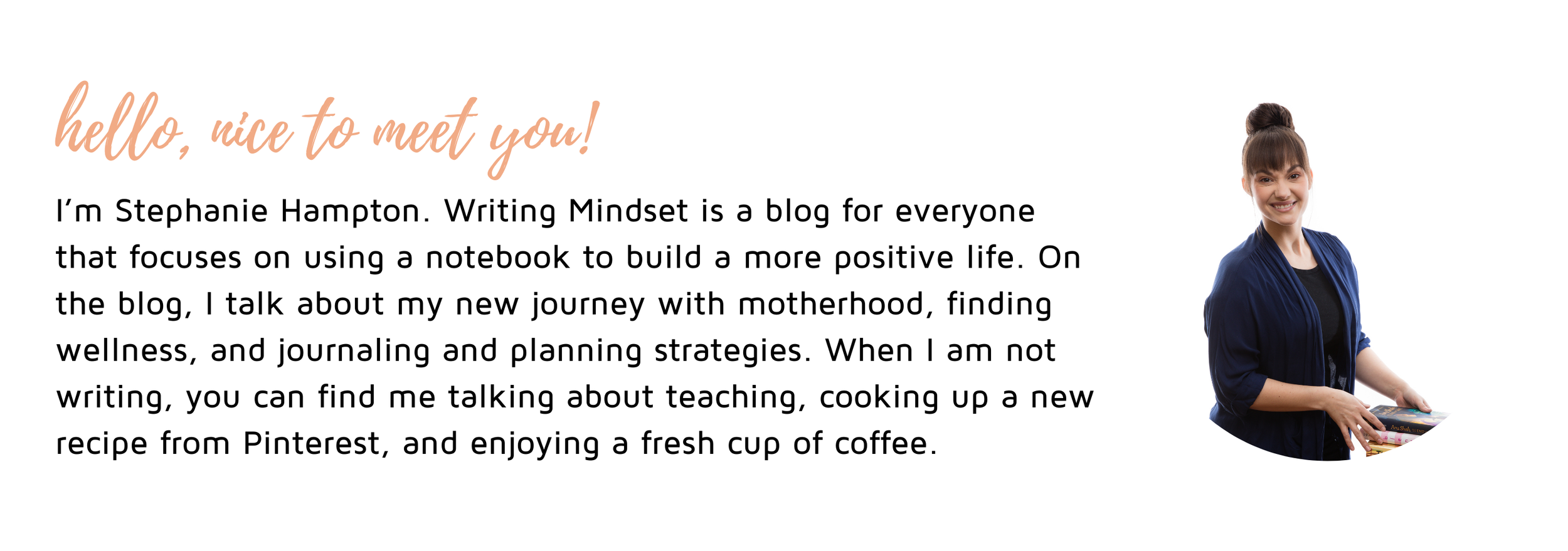The Big Brainstorming List of Procedures and Setting Up Classroom Routines
A Go-To List When Setting Up Any Middle School Classroom…Or Hitting Refresh At Any Point During the Year
I was recently looking through Jill Jackson’s book “How to Coach Teachers to Teach (Almost) Anything: A Totally Practical Guide to Instructional Coaching” and I found myself nodding when she was talking about the difference between classroom management and behavior management. While some love talking about these topics, some stray away because of a variety of reasons: Fear of being wrong, feeling like “we are already doing everything,” or being downright frustrated with behaviors in the classroom. On the blog, I talk about all things reading and writing all the time, but the truth is, unless you have classroom management in place, the teaching of content cannot occur. This post provides a launching pad for brainstorming different areas of classroom management. The effort that goes into your routines and procedures really pays off, and then, you can focus on the skills that are attached to behavior management in your classroom.
Classroom Management vs. Behavior Management
Classroom Management-routines, procedures, and expectations in class
Behavior Management-your response when a student has stepped outside of the boundaries of those routines, procedures, and expectations
These are from Jill Jackson, but she provides great ideas to think about for each area. I am hoping these can be individual reflection points or talking points to have with each other.
Classroom Management-
Has a signal for getting the whole class's attention
Gives directions when all students are quiet
Has a go-to redirection routine
Sets up, signals, and has a brief time limit for transitions
Modulates voice to get attention and focus students
Has a routine for revving students up when their energy is waning
Greets students by name every day
Gives a task right away so students enter class with a purpose
Behavior Management-
Explicitly teaches (teach, model, practice) each expected behavior
Does not assume students know how to behave
Teaches replacement behaviors for most common behavior problems
Has clear steps in place for students choosing to repeatedly break the classroom rules
Has a routine for de-escalating behaviors before the behaviors become intolerable
Allows students to recover after a misbehavior
I think it is important to talk about the differences between the two of these ideas because we often lump everything under the classroom management umbrella. This isn’t the case. Behavior management relies heavily on the routines and procedures that fall under classroom management. Also, classroom management is NOT unpredictable like behavior management is all the time. You can plan ahead for routines, and this then leaves you to be more responsive when kids enter with a variety of feelings, life experiences, and backgrounds. If we can put thought into classroom management ahead of time, we can humanize our behavior management responses in a positive way.
Brainstorming Lists for Routines and Procedures
Bathroom Use
Print a class roster. Give students a certain # of passes a week and highlight their name when they use their bathroom pass. When I taught 6th grade, I gave one pass a week. For emergencies, I had a brief conference with the student and let them know that next week they needed to work on a plan for the restroom.
Print physical bathroom passes students need to give to you.
Let kids go using a sign-in and sign-out system. This can be kept by the door on a clipboard.
Teach kids sign language for bathroom use so the request is silent and nondisruptive
Re-Grading/ Late Work Communication (Teacher discretion to accept late work)
Create a make-up work slip that students need to fill out in order to redo the assignment. Feel free to use this one.
Use something like a Google Form Grade Update Request to have students get their work re-graded (See image further down)
Assign a “not yet” score to a student’s paper if it is not completed with “reasonable best effort.” An example would be students who can get an A, B, C, or a Not Yet. Students can then redo the assignment.
If a student is absent, they need to come and ask for their work. In what ways do they need to ask?
Fill out a form
Come to you before or after class
Email
A sticky note on the desk
Asking for Help
How do students ask for help in your room?
Before or after class-ask a question
Come at lunch
A sticky note on the desk
Send an email
Daily Agendas
Are all the teachers on the team giving the same information? If teams aren’t used, what routines are building-wide?
What is included on the classroom board? Goals? Objectives? Essential questions? Homework reminders?
Do you go over the agenda at the start of class? Remind students at the end of class? When do students understand the purpose of the lesson?
Maintaining a Classroom Library/Checking Out Books/Turning Books In
Return bin for books. You can assign a student to be the class librarian to reshelve items or put them back in the right spot.
Checkout clipboard for classroom library books
One year, I took a picture of each student with the book they checked out, then I played a slideshow at the end of the year for them to see book checkouts!
Google Form
Student Materials
Try a student material workstation that includes: Lined paper, blank paper, pencils, pencil sharpeners, erasers, etc. This can also be the place to house hand sanitizer and Clorox wipes to have students help wipe down tables. A student materials area creates a place where students know where to go to get what they need.
Procedures for getting items. Do students have to ask to go get them? Should they stand up and go get whatever they need on their own? How do these rules changes during independent work, group work, and direct instruction?
Pencils: Will you supply a pencil if a student does not have one? What should students do if they don’t have a pencil? Keep count of pencils at the beginning and end of class? Example: Start class with 25 pencils, recount at the end of class to get back to 25.
Pencil sharpening: Do you want students to sharpen pencils at the beginning of the hour? Not during whole group instruction?
Students Turning in Work
Have a common place where students can turn in their work. You can use trays or baskets.
Have a numbered folder for each table in your class. Pass out folders and recollect folders to turn in and pass back graded work.
Create different bins for turn-in before you collect all of the work together: 1.) I’ve got this 2.) I almost have it, but I need more practice 3.) I need some help on this!
Instead of writing NAME at the top of papers, write growth mindset messages to students:
“_________” is a mathlete.
“_________” is a reader.
“Mrs. H believes in_________”
Teacher Desk Expectations
What are students allowed to get from your desk?
Do they need anything from your area if you have a student materials center?
What expectations do you have in place if a student were to take something from your desk area?
Put duct tape on the ground to outline the physical boundary for students
Dismissal
Do the students have to do anything before they leave class? Does the bell release them? Do you?
Chair pushed in
Paper and garbage are thrown away
Items turned into the turn-in trays
Do students stand by their desks until the bell rings? Do you allow students to line up by the door? What happens if they run out of the classroom to leave?
No-Name Papers
Do these get thrown away? Hung up somewhere? Kept in a certain location for students to go through?
Consider a no-name tray to collect work for students
Chromebook or Laptop Etiquette
During instruction, what are students doing with chromebooks? Turning screens around? 45-degree angle close?
Chargers-do you have them somewhere? Do you have extra that kids can use? Where should they go in your room if they need to plugin? Does this change work with your seating arrangements in class?
Do you have an online system that helps you control technology? Do you need more training to use it to its full effectiveness?
Food
Do you allow students to have food or snacks in class?
When do they eat? Are you being responsive to eating times so students aren’t hungry?
What happens if they are eating in class and should not be?
How does trash get handled?
Student Movement Directions
How will you have students line up at the door? Leave the room?
What directions will you give before group work? “Pack and stack” type directions?
LOCKERS: How will you handle it if kids need to go to lockers? What are your rules for bringing materials to class?




